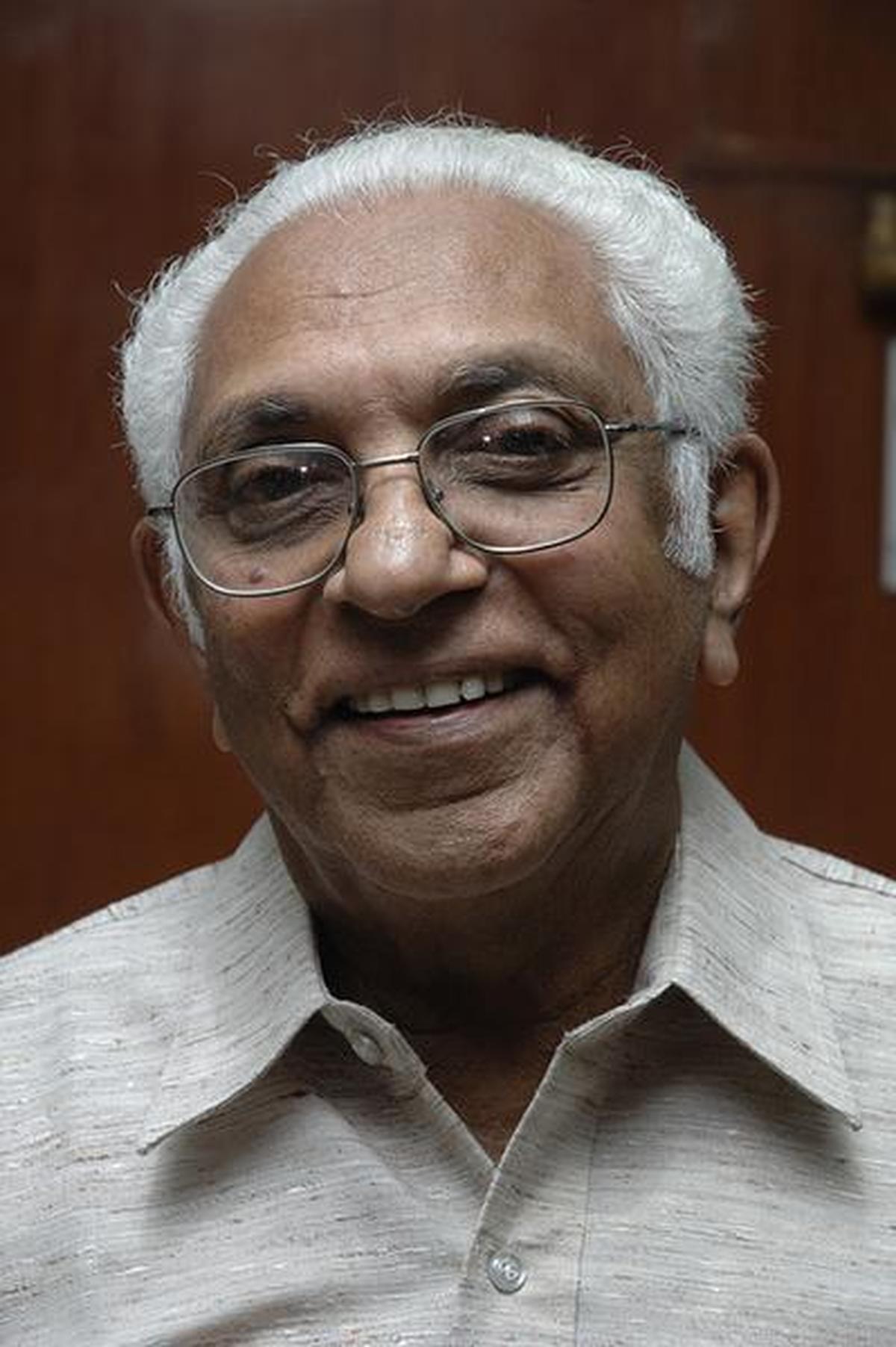Born in 1913, C. T. Kurien contributed to rethinking economics through his various writings, particularly books and his vision for a practical B.A degree in Economics at Madras Christian College (MCC), an autonomous college situated in Chennai, a port city in Southern India. Besides MCC, another institution he contributed to was Madras Institute of Development Studies (MIDS), a research-only institute, also in Chennai. Kurien passed away in July 2024 aged 93.
This blog post provides a brief introduction to Kurien’s life and economics. [1]
Brief Life
While at school in Kerala, Kurien was struck by the glimpses of Indian socio-economic realities found in Minoo Masani’s Our India, which was a text for his English course. It was recommended that he study logic and history before undertaking a degree in economics; and so, Kurien pursued his Intermediate (today’s class 11 & 12) from St. Joseph’s College, Bengaluru between 1948 and 1950.
Kurien did his B.A (Hons.) Economics at MCC (1950-53). In an autographical discussion in Rethinking Economics: Reflections Based on a Study of the Indian Economy (1996), Kurien shares details regarding his academic life. As a BA student, Kurien had to study 6 papers and write one essay; in the first year, he had ‘Principles of Economics’ and ‘Economic History’; and in his final year, he had ‘Public Finance’ and ‘Rural Economics’. The ‘Principles of Economics’ course dealt with the theory of consumer behaviour drawn from marginalist economists such as Lionel Robbins. It was in the ‘Public Finance’ course where the students were exposed to contemporary discussions related to the Indian Economy.
Since Madras University recognised BA (hons) as equivalent to an MA in Economics, Kurien was eligible for lectureship. And so, after his BA, he joined the teaching faculty at MCC in 1953. Kurien was to be associated with MCC for 25 years—he left MCC in 1978.[2] Between 1953 and 1958, Kurien (1996) identifies two debates, which took place in the pages of Economic Weekly that influenced him. First was VKRV Rao’s critique of Keynesian economics based on the standpoint of Indian specificities. The second was the debate on the choice of technique in relation to questions regarding planning. In the former, KN Raj, Joan Robinson, Amartya Sen, and others participated.
Taking a leave of absence from MCC, Kurien moved to Stanford University in 1958 to begin work on his PhD, which was completed in 1962. His teachers included H. Houthakker, K. Arrow, Irma Adelman, Hollis Chenery, Lorie Tarshis and Bernard Haley. Kurien’s Ph.D supervisor was Chenery, and when Chenery left to join the Kennedy administration, Moses Abramovitz became Kurien’s supervisor. Kurien’s Ph.D thesis was titled Factor Market Structure and Technological Characteristics of an Underdeveloped Country: An Indian Case Study. The central argument was that there was a rational basis “for factor market imperfections in underdeveloped countries, particularly those said to be characterised by surplus labour” (p. 27).
In 1978, Kurien left MCC and joined MIDS as its director. MIDS was founded by Malcolm Adisheshiah in 1970 and in 1977 was reconstituted as an Indian Council for Social Science Research (ICSSR) institute. Kurien served as Chairman of MIDS from 1997 to 2003. At MIDS, he supervised ten PhD dissertations (for the list, see Appendix A). In 1996, Kurien received UGC’s Lifetime Achievement Award. In 2002, he served as the President of Indian Economic Association.
Rural Transformation
Kurien’s book Dynamics of Rural Transformation: A Study of Tamil Nadu, 1950-1975 (1981) was a pioneering one in regional economics, and it was adapted as a model study for other states by ICSSR. Published in 1981, the book examined the nature of rural transformation in Tamil Nadu between 1950 and 1975.
Kurien outlines the following ways to interpret changes in Tamil Nadu’s rural economy.
- Commodity flow approach: this mostly involves the “conversion of all quantities into value categories…” (p. 119). Within this, the commonly used methods are the neoclassical aggregate production function and the disaggregated input-output.
- Class approach: since classes are “conceptual categories”, their usage allows for commenting on long-term changes. Moreover, when applied to studying short-term changes, the translation of “conceptual categories into operational empirical categories” have been found to be “difficult” (p. 120). Kurien, here, refers to the debate between Ashok Rudra and Utsa Patnaik in 1971 in Economic & Political Weekly (p. 147, n. 4).
- Factor analysis: this “enables an examination of the interrelationships among a set of variates to proceed towards the construction of a composite index out of the variety of variables” (p. 120). Kurien probably picked this up from Adelman, one of his Stanford teachers; she co-authored with Cynthia Morris Society, Politics and Economic Development: A Quantitative Approach in 1967.
- Cluster analysis: it “permits one to group a set of variables or entities whose properties can be represented by a variety of variables, into more homogeneous subgroups…” (p. 120). this was used in his earlier work with Josef James which was published as Economic Change in Tamil Nadu 1960-1970 (1979).
Kurien eschews all these four approaches and prefers going with “a deliberately chosen focus” (p. 120) to make sense of rural transformation. In the book, he makes use of decile groups, Gini coefficients and concentration ratios. Kurien makes the issues in comparing various survey data very explicit and provides a rich description of the data sources. There are insightful discussions on cropping patterns in the districts versus the state (pp. 37-41), increased mechanization of agriculture (p. 35), increased consumption of fertilizers (p. 36), decline in rural real wages (p. 100).
Markets in Economic Theory
Kurien’s R.C. Dutt lectures on political economy, given in 1990, was published as a book in 1993. It was titled On Markets in Economic Theory and Policy.
While he has not made theoretical contributions to the notion of markets, as a student of development economics, Kurien has “tried to understand the phenomenon of the market in the context of the evolution and transformation of economies” (p. 7). He rightly observes that “…while theory has the facility to make abstractions from reality, policy cannot abstract away from reality” (p. 12). After stating that “[t]here are different theoretical traditions in economics”, Kurien draws our attention to the “two very broad traditions” outlined by Sen: “the ‘ethical’ and ‘engineering’ traditions (p. 8). Kurien’s standpoint is best captured by this sentence: “the market must be considered both as a social institution and as embodying certain logical properties” (p. 10).
In his lectures, Kurien focuses his attention on four thinkers: Adam Smith, Karl Marx, John Hicks, and Karl Polanyi. In this blog post, we shall restrict our attention to Kurien’s view of Adam Smith—especially because of the dominant view which incorrectly views Smith as a precursor of marginalist economics and a champion of free market.
Kurien rightly points out the state of affairs that Smith is not pleased with: guilds and restrictions on trade. Smith wished that people had the freedom to enter the market and compete. And, most importantly, “…Smith’s position is that the exercise of self-love must be seen within the context of a kind of social relationship built on justice which includes protecting the weak and chastising the guilty” (p. 15). Kurien makes his own position very explicit when he writes that he favours the “ethical tradition…the institutional approach” (p. 11).
Traditions in Economics
Kurien’s engagement with various approaches in economics is visible in his Dynamics of Rural Transformation (1981), On Markets in Economic Theory and Policy (1993), and ‘History, Logic and Narrative in Pedagogy’ (2019)—a chapter in Pluralistic Economics and Its History, a book I co-edited with Ajit Sinha.
Drawing on Sen, Kurien (1993) places Socrates, Aristotle and Kautilya in the “ethical tradition” and Walras in the “engineering tradition” (p. 9). But in fact, Sen places Kautilya in the engineering tradition alongside Petty and Walras. Sen, in his slim book On Ethics and Economics (1987), writes: “The ‘engineering’ approach also connects with those studies of economics which developed from the technique- oriented analysis of statecraft. Indeed, in what was almost certainly the first book ever written with anything like the title ‘Economics’, namely Kautilya’s Arthasastra, the logistic approach to statecraft, including economic policy, is prominent” (p. 5).
Such a distinction is a poor one because Smith’s political economy is a mix of logical and ethical considerations. More significantly, such a distinction is problematic because it obfuscates the truth—that there exists contending paradigms within the so-called engineering tradition. For example, Ricardo is a classical political economist while Walras is a marginalist economics—and both of them were concerned about ethical matters.
On the first point, Kurien also agrees. As he writes: “there is no incompatibility between the ethical and engineering approaches” and “…the tendency to think of the two traditions as mutually exclusive, and even as antagonistic … is an error and a pity” (p. 9). Kurien also calls them the “institutional approach” and the “logical approach” (p. 10).
In Kurien (2019), he begins by noting that economics teaching is dominated by neoclassical (I prefer marginalist) economics owing to the dominance of textbooks by Mankiw (and in the past, Samuelson and Marshall). While Kurien (1981) distinguished between the neoclassical production function and class analysis, his subsequent writings draw from Sen’s classification. In Kurien (2019), he calls the two approaches in economics as the “substantive approach” and the “formal approach”. He places Smith in the former and Ricardo, Jevons, Walras, Arrow, and Debreu in the latter.
Concluding Thoughts
Kurien had a life-long interest in the pedagogy of economics. In Kurien (2019), he recommended the inclusion of real-life issues, history of economic thought and economic history, and the collection and analysis of data in the economics curriculum. And so, when I sent him my book Macroeconomics: An Introduction (2021), which is built on my standpoint of contending (“engineering”) approaches in economics, I was a little anxious. I was reassured and delighted when he wrote that he found my work as “an original contribution to economics as a branch of the social sciences” (personal correspondence, 17 July 2021).
Kurien’s work helps us understand the specificities of the Indian economy better. Initially, he used descriptive statistics, and later in life he employed narratives—all with the clear purpose of ensuring a good life for all.[3] Let me end this essay with an excerpt from Kurien (1993): “My view is that…any serious study of social issues and of society, or of the economy as part of the study of society, is related to two basic queries: ‘What is my responsibility to myself?’ and ‘What is my responsibility to my neighbour?’, precisely because society (and economy) consists of myself and my neighbours and of our interaction” (p. 11).
ALEX M. THOMAS is Associate Professor of Economics, Azim Premji University, Bengaluru, India. He is the author of Macroeconomics: An Introduction (Cambridge UP, 2021). He is a founding member of the Indian Society for the History of Economic Thought (ISHET) and serves as a council member for the European Society for the History of Economic Thought (ESHET).
Photo: C. T. Kurien, Source: The Hindu.
APPENDIX A
| Year | Name | Title |
| 1982 | P. Rajkumar | Household Savings, Patterns, Determinants and Motivations |
| 1984 | Josef James | Urbanisation and economic change in Tamil Nadu |
| 1985 | P. Usha | Leather Industry in Tamil Nadu: Study of structural change during 1960-80 with special reference to 1973 export trade control policy |
| 1988 | M. S. S. Pandian | Political economy of agrarian change in Nanchilnadu: the late 19th century to 1939 |
| 1988 | V. K. Ramachandran | Socio-economic characteristics of agricultural labourers in a vanguard agrarian region |
| 1988 | S. Janakarajan | Aspects of market interrelationship in a changing agrarian economy: A Case study from Tamil Nadu |
| 1990 | K. Bharathan | The Handloom Industry in Tamil Nadu: A Study of Organizational structure |
| 1993 | V. Chandrasekara Naidu | Economic processes and the weaker sections: a Comparative study of two villages in Tamil Nadu |
| 1995 | J. Jeyaranjan | A Village Economy in Transition: A Study of the Processes of Change in Iluppakkorai, Tamilnadu, 1960-1985 |
| 1995 | K.T. Thomson | Growth Technology and levels of living of fishermen in Tamil Nadu |
Table: List of PhD students supervised by C. T. Kurien at MIDS
Source: https://www.mids.ac.in/doctoral-programme/phd-thesis-awarded/
[1] This blog post is based on the online presentation I gave at The Reading Club, Department of Economics, MCC on 3rd August 2024; I am grateful to Arun Koshy for inviting me to commemorate Kurien’s life and work.
[2] Under Kurien’s leadership, the faculty body at MCC restructured their undergraduate curriculum; a report of that exercise, including the syllabus, was published as ‘An Undergraduate Course in Economics’ (1976) in Economic & Political Weekly (vol. 11, no. 51, pp. 1962-1966). I am grateful to C. Selvaraj for alerting me to this article.
[3] He reviewed a variety of economics books for the magazine Frontline; it would be fruitful for someone to write a paper studying his numerous book reviews. For a list of reviews, see https://frontline.thehindu.com/profile/author/C-T–KURIEN/ (for drawing my attention to this aspect of Kurien’s work, I acknowledge Raghunath Nageswaran).
Publisher: Source link











